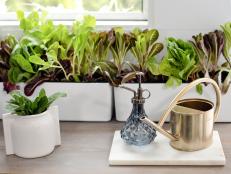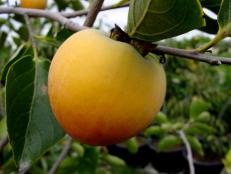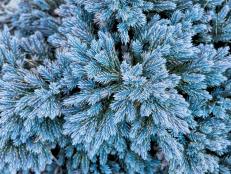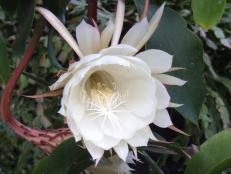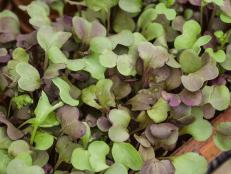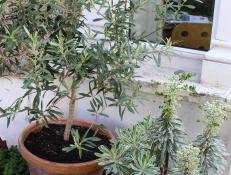How to Create Indoor Bonsai Gardens
Bring beautiful, living trees into your home when you practice the ancient art of Bonsai.

William N. Valavanis, International Bonsai
This RAF Dwarf Scots pine bonsai with two trunks is a rare specimen.

Gardeners have been shaping living trees, shrubs and other plants into bonsai for thousands of years. The Chinese created the first miniature landscapes, a practice that Japanese growers modified when they began focusing on individual trees.
But bonsai isn't just about growing a tree in a pot. "It's a precision art," says William N. Valavanis, a bonsai master, educator and founder of the International Bonsai Arboretum. He's studied the techniques for some 56 years and teaches them around the world.

William N. Valavanis, International Bonsai
Wisteria bonsai are usually trained to show off their exquisite flowers rather than their branches.
Bonsai isn't for impatient gardeners. Pruning and shaping a plant into an artistic form takes time. First, Valavanis says, you've got to prune the plant and start wiring it into the design you want. This step can take years.
In the meantime, you have to give your plant the basics that all plants need: water, air and light. Some gardeners keep their bonsai in training pots during this time and transplant them into various types of containers as the last step in the bonsai process.
Shallow containers are popular, Valavanis explains because they give the impression of a small tree growing in a big landscape. But big or expensive pots aren't necessary, he adds; he recalls seeing a bonsai in Italy thriving in a sardine can.

Photo by Eric Schrader / Courtesy Bonsai Society of San Francisco
Evergreen shrubs or trees like this one are commonly grown as bonsai and sold at nurseries and garden centers.
Bonsai can also be more than small, tabletop specimens, says Richard W. Bender, author of Bountiful Bonsai: Create Instant Indoor Container Gardens with Edible Fruits, Herbs and Flowers (Tuttle Publishing, 2017). He takes a radical approach to this old art, training plants into bonsai forms that can range from a few inches to a few feet tall.
Unlike many bonsai practitioners, he doesn't limit his plant choices to dwarf or miniature varieties that can be controlled by pruning. For an "instant" bonsai garden, he grows standard plants in larger containers and gives them supplemental lighting and other special care.
Bender grows bonsai jasmine and hibiscus for their flowers and edibles like cherries and oranges for their fruit. His bonsai kitchen herbs include rosemary and thyme, and for medicinals, he prunes and shapes tree tea and camphor laurel.

William N. Valanavis/International Bonsai
'Deshojo' is a dwarf Japanese maple with bright red leaves in the spring that turn reddish-green in summer and orange and red in fall.
You can bonsai standard trees, Valavanis agrees. A standard MacIntosh apple, he says, would produce 4- to 5-inch fruits if the growing conditions are right. For his collection, he prefers dwarf varieties that will bear small fruits or flowers.
For beginners, Valavanis suggests growing junipers, because he finds evergreens easy to grow and shape, and he says they're forgiving if you make a mistake. You don't need specialized tools when you're starting out, he adds, except for a concave pruner. This pruner is designed to cut into the trunk of a tree and dig out some of the tissue when you're cutting off branches. While that might sound harmful, it's done for cosmetic reasons. The tissue grows back quickly and helps conceal the area where the branch was removed. Some of Valavanis' students have substituted ordinary objects for bonsai tools, using bent forks, for example, as root hooks or rakes.
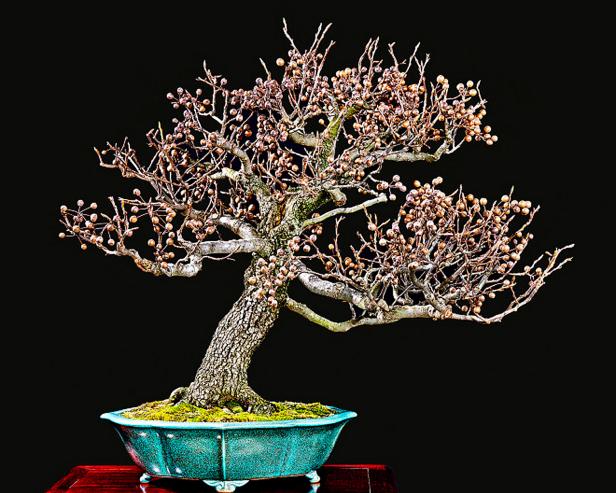
William N. Valavanis, International Bonsai
This dwarf pear tree, trained as a bonsai, bears naturally small fruits.
If you're interested in bonsai trends, Valavanis says gardeners are increasingly interested in collecting trees native to America. If you do this, you must have permission from the owner of the tree and the land. It's becoming more popular than using imported plants for bonsai, he adds, and naturalistic design styles are also trending. He recommends finding a local teacher or classes when you're ready to learn the art of bonsai and fill your home or garden with beautiful plants.







